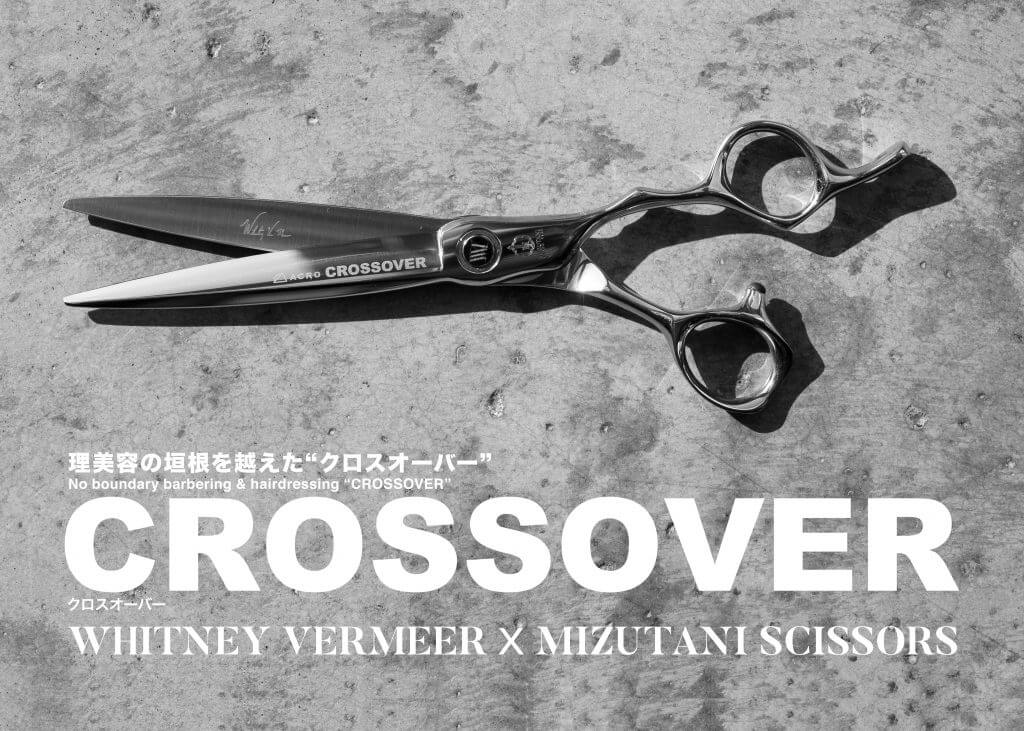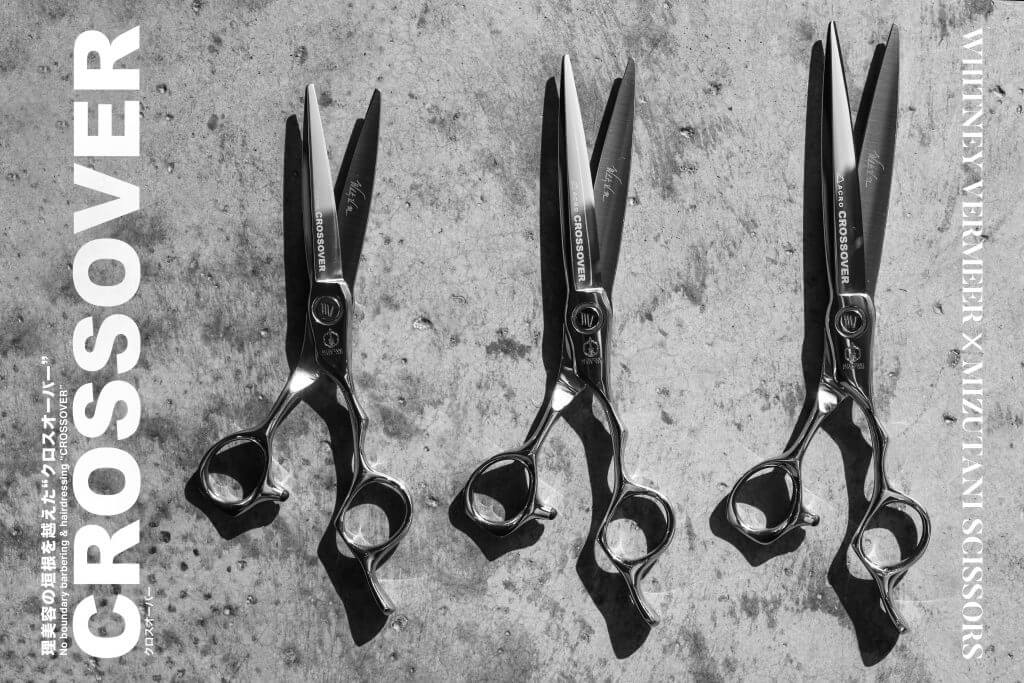Making waves in the hair industry is nothing new for Minneapolis-based educator and entrepreneur Whitney VerMeer. VerMeer owns her own space, The Aesthetic, a bespoke concept, which appears on her beautifully curated Instagram—delivering singular cuts and cocktails. She is booked months in advance with clients flying in to see her.
Her “conceptually and architecturally-inspired hair designs” earned her a NAHA in 2017 for Men’s Hairstylist of the Year and she’s been published extensively with plenty of admirers, among them L’Oréal and Andis Company, where she has consulted. However, critical and commercial success hasn’t gone to her head.
Obsessed with her craft, VerMeer is evolving the salon professional industry to be more open and equal. (VerMeer herself identifies as lesbian.) Earlier this summer, VerMeer launched a collaboration with Japanese brand Mizutani, making her the first woman to design and develop a line of haircutting scissors made ergonomically for women.

“Crossover,” named for its ability to cross over the hands of barbers and hairstylists, comes in two different sizes: Crossover CR-1 for a free handling feeling, and the smaller Crossover CR-2 for more precise haircutting. They are both made of Nano Powder Metal, giving the scissors sharp edges and high durability. We had the pleasure of speaking with VerMeer about the process of creating “Crossover” and how it feels to have created and launched her own scissor line:
The Tease: How did this collaboration with Mizutani come about?
Whitney VerMeer: The collaboration came about while talking on the phone with Kiyoshi Okamoto, of Mizutani, on the phone. We were discussing the prospects of me teaching for them, and I pitched the idea and he ran with it!
What encouraged you to create “Crossover?”
The need in the market. Women are generally more fluid with clippers because of the balance of the machine. However, this is not the same with a traditional barber scissors.
Barber scissors are generally 6.5 inches in length or longer. Reason being that it needs to cover a broader space while doing scissor-over-comb. Most scissors at that length are incredibly heavy and require a lot of stress on the thumb. I thought if we could make a handle that accommodated smaller hands and could be both long AND light—it would be successful.
What did the process of creating “Crossover” look like?
I had countless phone calls with Kiyoshi. I didn’t know him well at the time, and we actually started this process prior to meeting. It took a lot of trust on both ends, but we grew a relationship over the phone and eventually met.
Last November, I went to Japan for a show and had the opportunity to meet the owner and the incredibly talented team of Mizutani. They showed me the first prototype, and we made notes. Then, later in May of this year when I returned, they had the second prototype in various lengths. We made adjustments, and before I knew it, it was finished.
This month will be two years since the inception of [this line].

Being the first woman to design and develop a scissor line, why do you think it’s important for women to be part of the creative process?
I think it is important because it is a biological truth that men and women have different hands that need to be accommodated.
Traditionally, most trades are catered to men because women were at home and taking care of children. We don’t live in that world anymore, and it is important to question the way things are and evolve past it.
How do the scissors compare to others you’ve used in the past?
I’m honestly not just saying this because they are my concept, but they are truly the most superior tool I have ever used. From the handle, to the balance of the length, to the steel. Everything else I’ve used isn’t even comparable.
It states on your website that the scissors have high holdability. What is it about the material and design that make it so?
The holdability is due to the handle—the way the thumb is able to slip out easily and rest on the outside while doing scissor-over-comb. Ergonomically speaking, it takes a tremendous amount of work off of your hand and requires less muscle memory.
Why was it important to you to have two different types of handles for “Crossover?”
The two different handles are to cater to hand size. We refer to them as “men’s and women’s” very loosely, as a lot of men have bought the CR-2 out of comfort.

You’ve stated that it took 2 years to develop “Crossover.” How does it feel now that the line is out in the world?
Humbling. It’s almost overwhelming if I sit and think about it. I have received an unbelievable amount of feedback about the scissors, and it has all been very positive.
It is available in 40 different countries across the world, and it does not fall lightly on me that people save their hard-earned money to purchase something that I designed. It really is a dream come true to have made history in the hair industry. It’s been a goal of mine, and I sometimes can’t believe that it actually happened.
Do you have anything else in the works right now that you can tease?
Yes! I have been working on a styling product for well over a year (I’m still perfecting it), and the brand is unlike anything in the industry. There are tons of great products in the industry already, but I wanted to make my own and one that had a voice I wanted to stand by.
You can follow Whitney VerMeer’s work here and check out her website here.

